Why did the rose in the pot dry up and how to revive it?
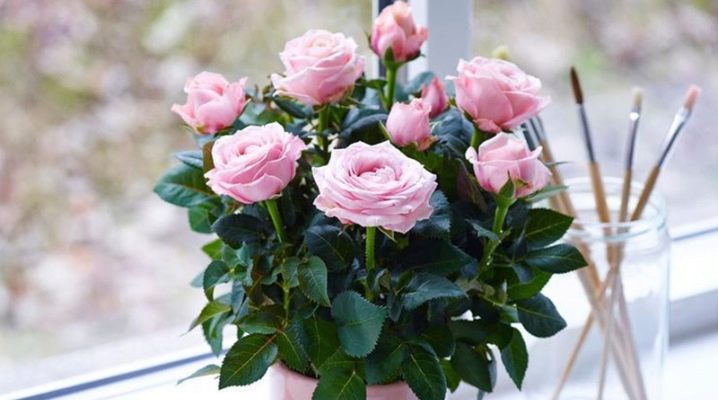
Rose is a very popular flower that many people grow at home. The plant is known for its attractive appearance, for which a large number of flower growers love it. In this article, we will find out why a rose in a pot suddenly dried up and how to revive it in such a situation.
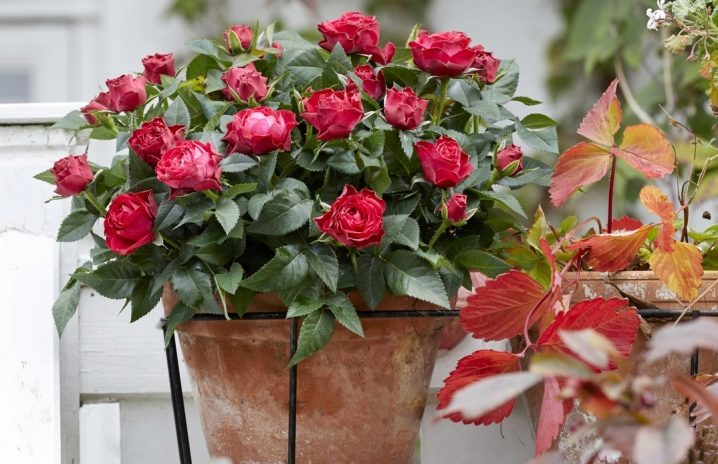
Improper care
A rose, like any other decorative flower, needs in compulsory and proper care. If you treat this issue with disdain or irresponsible, indoor green "decoration" can get sick, start to dry out. Very often, the culture that grows in a pot suffers greatly from improperly performed maintenance operations, as well as from inappropriate living conditions.
The home beauty rose often withers due to lack of lighting. It should be borne in mind that the culture should not be exposed to direct sunlight, but diffused light is simply necessary for it. Due to this, the rose can feel great being outdoors in the fresh air. That's why a beautiful bush is recommended to be taken out to the balcony space or to the garden with the arrival of June.
Of course, in these settings, the plant will still need moderate shading.
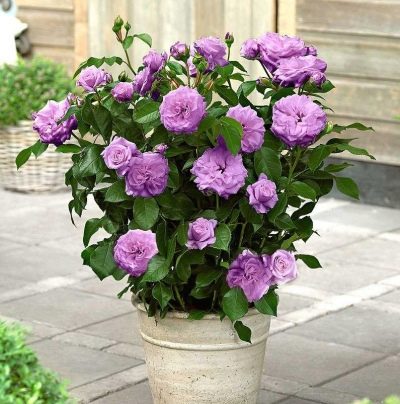
A plant that grows at home can dry out due to improperly selected soil. It should be borne in mind that the flower in question feels comfortable in a looser soil mixture, which is able to fully pass air and water for irrigation. It is very important to ensure that there is no stagnant water near the root system of the rose.
To plant a rose, it is required to combine humus and sod in equal proportions. In addition, a small amount of sand should be added to the indicated components. At the same time, a drainage layer is necessarily laid out on the bottom of the container.

If the grower noticed that the rose has wilted, dries or sheds leaves / buds, this may indicate about her unhealthy diet. So, if the plant receives less nitrogen, its leaf blades will quickly turn pale and become covered with veins of a yellow tint. Potassium deficiency can also have a negative effect on the rose.
The flower can begin to dry out if it is in a room with inappropriate temperatures. When growing an attractive crop, it is very important to control the temperature at which it develops. In no case should the pot with the plant overheat. In the summer season, it is advisable to transfer the flower to a balcony or loggia. Against the background of the winter season, a home rose may well be at room temperature.

An attractive plant that grows at home, reacts very poorly to drafts. But at the same time, the rose still needs adequate ventilation. To keep the plant in a comfortable environment, you can make a cylinder out of paper for it, and then wrap a tank with a flower with it.
So that the rose does not get sick and does not dry out, it must be provided with competent care immediately after purchase and delivery home from the store. It is important to ensure that the culture receives all the necessary nutrients, is in a room with a comfortable temperature, does not freeze or overheat.In addition, the state of the flower must always be kept under control in order to revive it in a timely manner, turning to effective resuscitation.
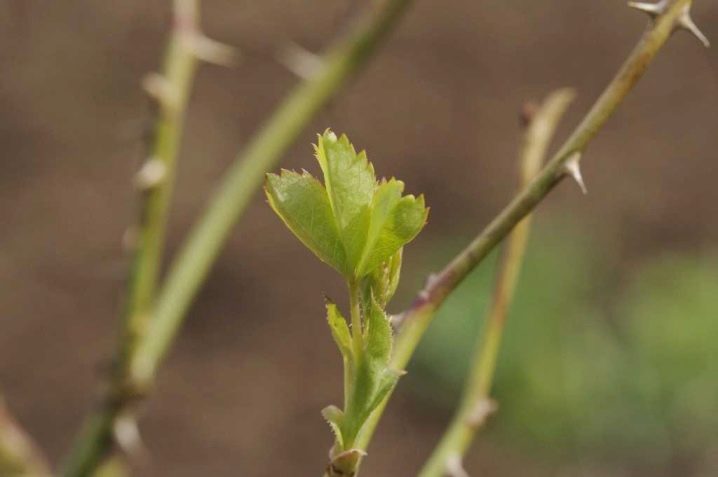
Treatment of diseases
A rose that grows in a pot can begin to dry out due to various diseases. Unfortunately, this popular decorative culture is not immune to a large number of serious diseases.
We will find out what ailments most often provoke the drying of a rose in a pot with a substrate.
- Rust... A very serious disease that can cause enormous damage to the plant. A fungal disease can completely affect the entire bush. If the crop suffers from rust, characteristic rusty build-ups can be found on the bottom and tips of its leaf plates, which spread dangerous spores. Those areas that are already affected must be removed, and the plant itself must be thinned out.
In addition, Bordeaux liquid and copper sulfate are highly effective in the fight against rust.
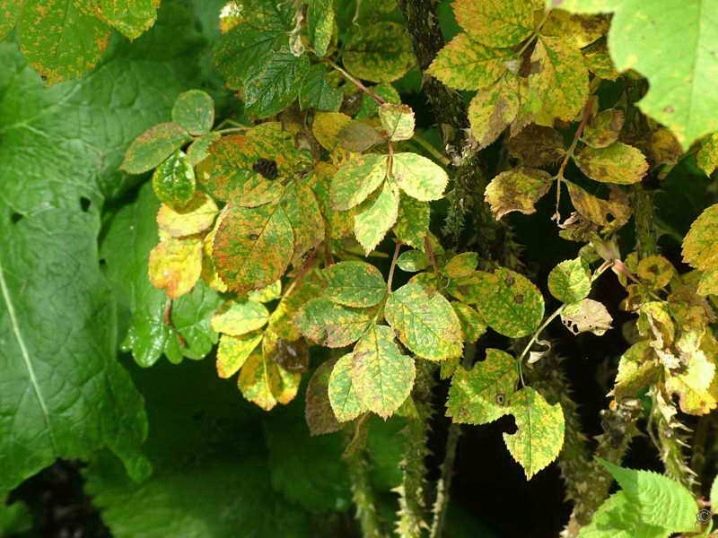
- Black spot... Another dangerous disease that causes the plant to dry out quickly. In this case, the bush acquires unnatural brown spots, which after a while merge together. If there is a black spot, the affected rose shoots, along with the leaf blades, must be removed, and the bush itself must be treated with special immunostimulating drugs.
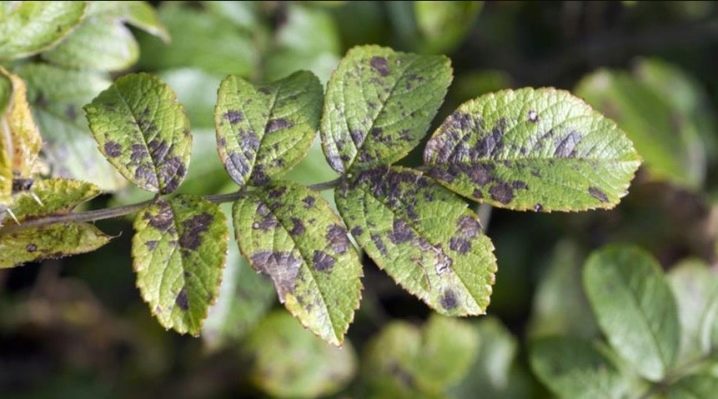
- Powdery mildew... One of the most dangerous diseases that a potted home rose is susceptible to. This fungal infection is the most common one. If powdery mildew occurs, the affected leaves are covered with a whitish or grayish bloom. Fungi grow very quickly in warm and shaded areas. To save a room rose from this ailment, it is necessary to process it with the help of the drug "Gamair".
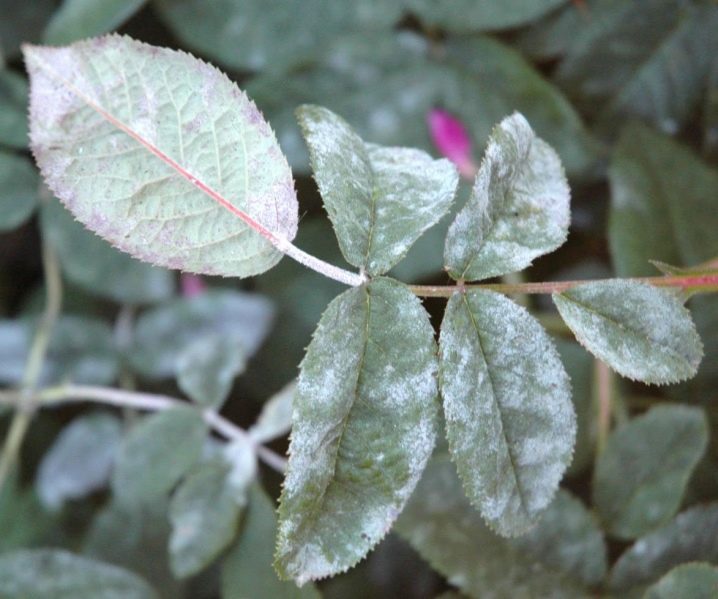
- Downy mildew... No less insidious ailment that leads to the drying up of a once beautiful and healthy culture. Most often, this disease develops itself in conditions of increased dampness. It manifests itself in the form of purple spots on the inside of the leaf plates. In the fight against downy mildew, it is advisable to turn to the use of special preparations of high efficiency.
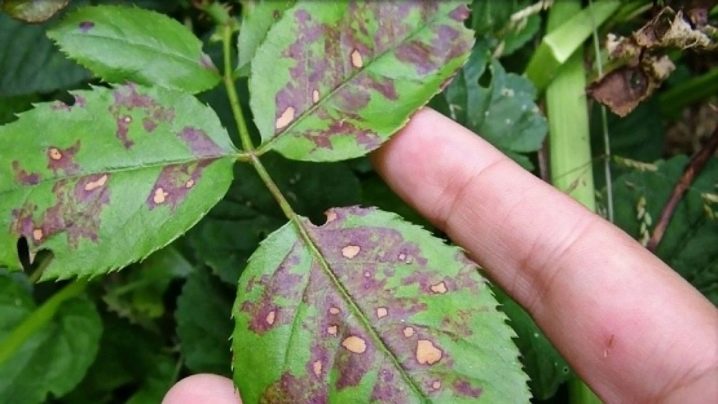
It is necessary to take into account the fact that treatment of diseased bushes must be carried out outside the living quarters... If the implementation of measures in such conditions is impossible, then they must be carried out against the background of good ventilation. Having completed the processing of the decorative culture, she needs to be given a little time. This is necessary so that the rosette has time to "ventilate" slightly, after which it can be returned to its main place.
If the grower always closely monitors the condition and health of the rose, he will be able to timely identify any disease in order to quickly save the culture from wilting. In this case, you can use not only special drugs, but also a variety of folk remedies.
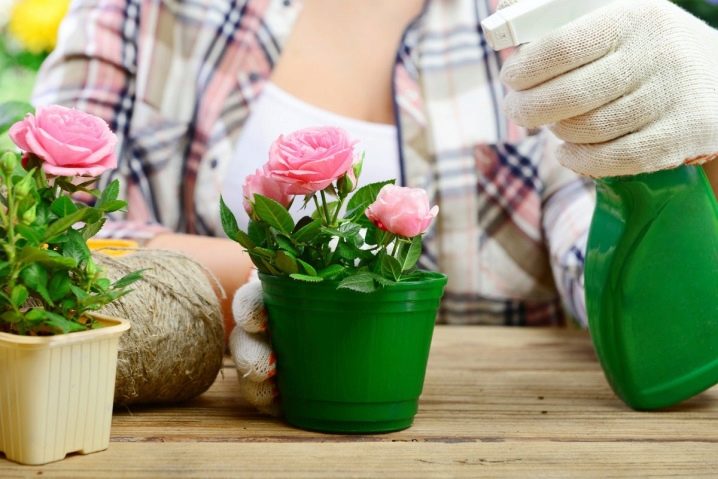
Pest control
Even if the rose is grown in a pot and at home, it can still suffer from attacks of various kinds of insects. In many cases, it is because of this that the plant begins to dry out. Consider the most common parasites that most often spoil the condition of the rose.
- Spider mite... A very dangerous pest that occurs in a huge number of cases. The spider mite is a miniature insect, the body length of which is rarely more than 1 cm. When the spider mite has just started infecting the plant, the symptoms will be almost imperceptible. After a while, the leaf plates of the rose acquire an uncharacteristic marble shade, covered with cobwebs.

- Thrips... Parasites that often attack the domestic rose. The average size of this pest is 2 mm. For thrips, an elongated body structure is characteristic.If the bush is affected by this pest, then the leaf plates acquire an unnatural yellow tint, and then completely discolor. In this case, the lower part of the leaves is covered with brown spots. In addition, when affected by thrips, there is a risk of deformation of the foliage, wilting of buds. The latter cannot open up in such conditions.
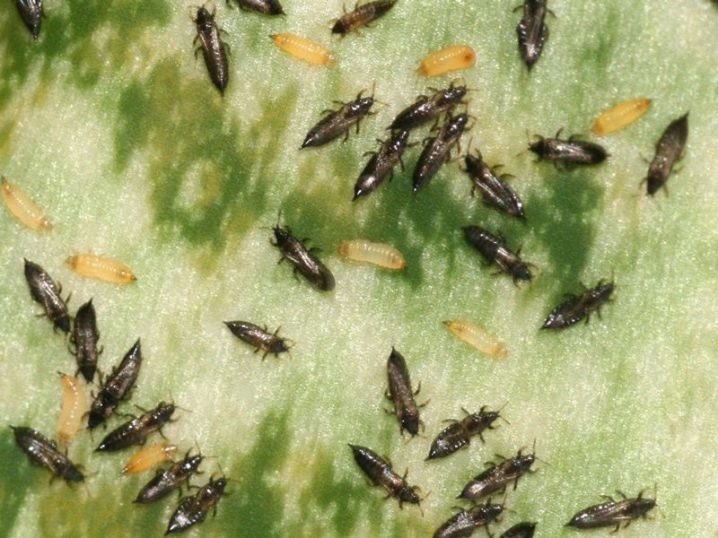
- Aphid... The insect very often affects a variety of cultures, including the home decorative rose. This pest is a very small insect, the length of which is no more than 4 mm. Aphids are green, red, yellow, white or black. If this pest has infected the plant, then its shoots will soon lose their attractive shine. The leaf blades are then deformed and turn yellow. The buds will certainly wither, stop opening.
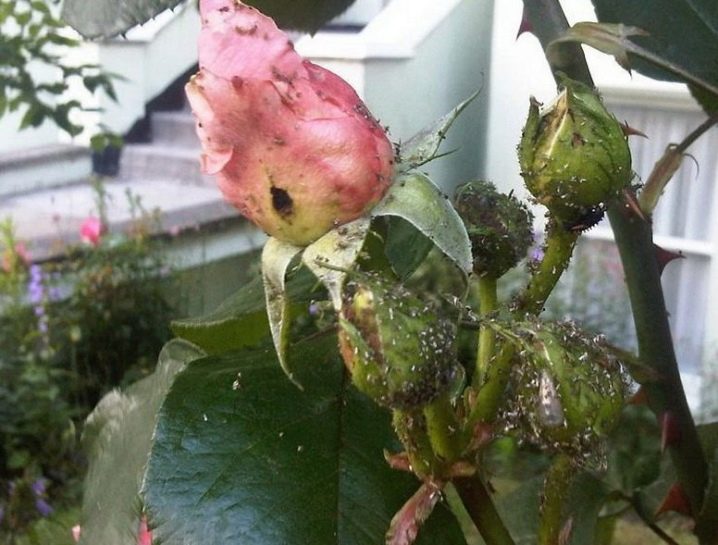
If the grower noticed that the buds and leaves of the plant began to fall off, and it itself dries up, it is necessary to start saving it as quickly as possible. First of all, a rose bush affected by pests should be isolated from other plantings in the room. If the culture is significantly affected, then it makes sense to use special chemicals. Such drugs as "Akarin", "Vermitek", "Neoron" demonstrate high efficiency. The listed compositions are required to be operated strictly according to the instructions indicated on the package.
Based on the level of damage to the home rose bush, more than one treatment may be required. In difficult cases, up to 3 treatments are carried out, between which small intervals of 5-10 days are kept.
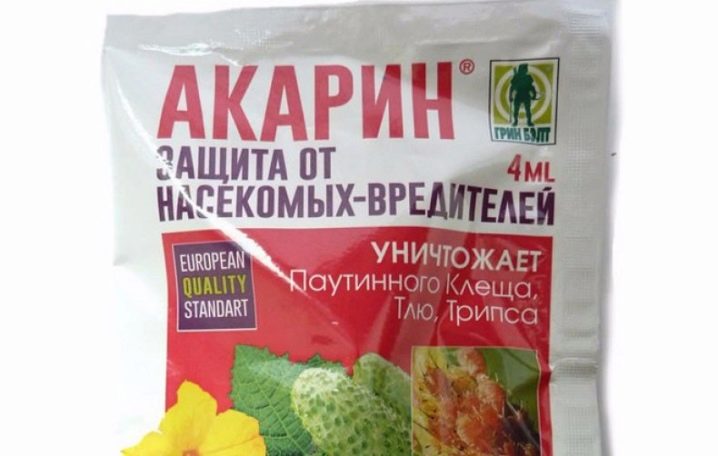
Prevention measures
It is easier to anticipate the various problems of roses than to try to solve them when they have already arisen. It is advisable for a flower grower to turn to various preventive measures so that the decorative flower does not begin to dry out.
We will analyze the main points regarding measures for the prevention of diseases and drying of the rose.
- The most important preventive measure is in compliance with all the rules and regulations of agricultural technology for growing room roses. So, if the culture has been affected by mold or any dangerous insect pests, proper care can significantly reduce the damage when planting in a pot.
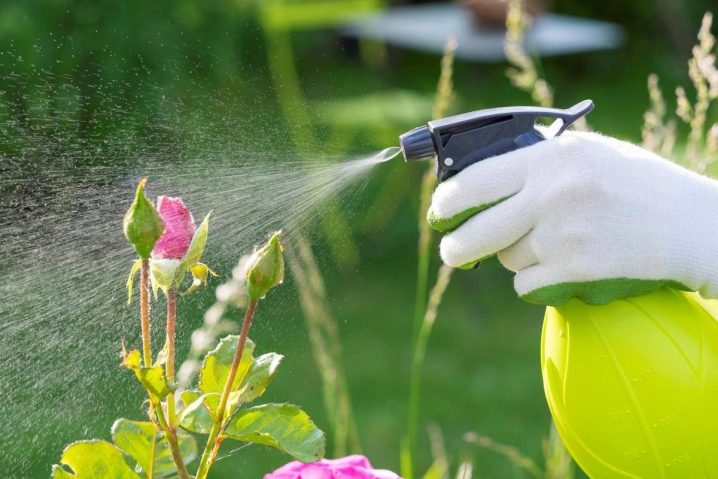
- In garden and flower shops, crops planted in pots are fertilized through specialized dressings... Due to them, the decorative and attractive appearance of the crops is maintained. In addition, store plants are displayed in places with optimal humidity and light. That is why, getting from the ideal conditions of detention to less favorable, the rose can lose its former aesthetics, start to hurt, fade, dry out. To avoid such problems, the flower needs to provide optimal conditions for its growth.
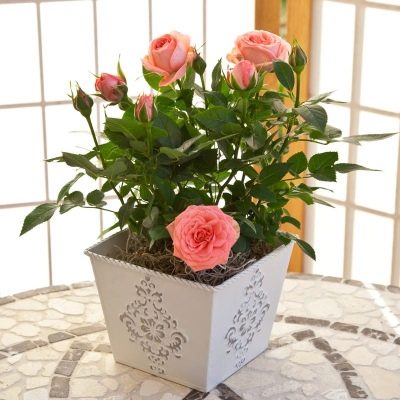
- It is very important to properly care for the plant., avoiding dismissive and disregarding attitude. The condition of the rose must be carefully monitored, even if it looks perfectly healthy and vibrant. Fortunately, the considered decorative culture does not require complex and expensive maintenance, being relatively unpretentious.
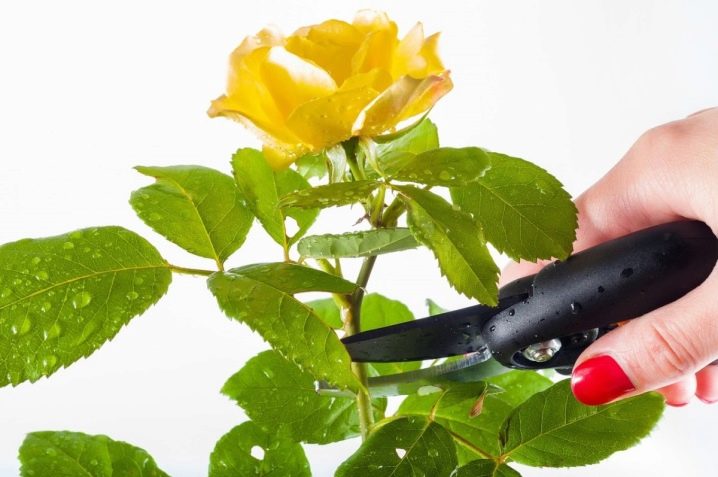
- It is very important to always keep under control the condition of the home-grown decorative flower.... The flower grower should regularly inspect the rose in order to timely detect the first signs of certain diseases or parasite attacks. Only if this simple condition is met can one count on the constant maintenance of the impeccable state of the elegant culture.

When can't a plant be saved?
If the rose has time to dry completely or the lion's share of its rhizomes has dried up, then there will be nothing to help it. It will be impossible to revive the decorative home culture even if it is completely covered with mold or insect pests. In such conditions, the plant will certainly die.In these circumstances, it will be necessary to dig up the flower, and then dispose of it as soon as possible in order to prevent further infection and death of plantings located nearby.
If the procedures aimed at resuscitation of the flower did not bring the desired effect, you should dig it up with the utmost care, transfer it to another place and carefully examine the root system. If too serious and severe damage is present on the roots (due to decay or pests), then you can try to cut the old and affected shoots of the bush. In this way, rose restoration can be simplified and accelerated.
The flower grower must take into account that it is completely pointless to prune already dead roots of a home rose. Such actions will not bring any results, since it will not lead to further recovery.
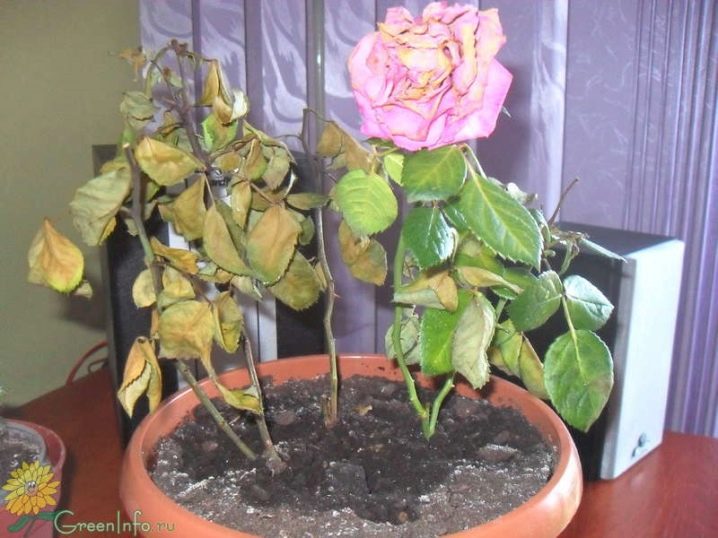

































































































The comment was sent successfully.